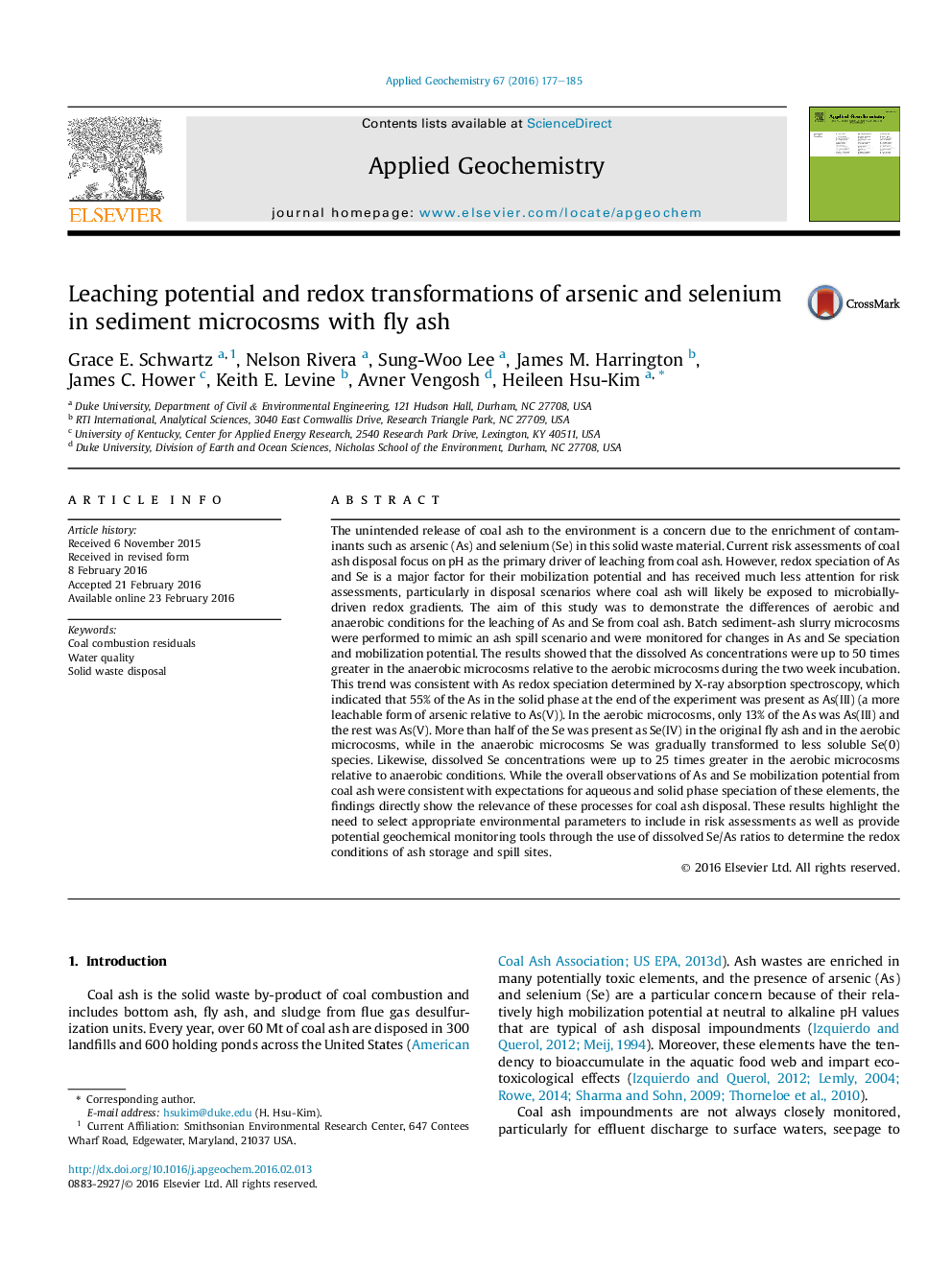| کد مقاله | کد نشریه | سال انتشار | مقاله انگلیسی | نسخه تمام متن |
|---|---|---|---|---|
| 4435609 | 1620224 | 2016 | 9 صفحه PDF | دانلود رایگان |
• As and Se leaching during a coal ash spill depends on the redox conditions of the site.
• Arsenic mobilization is greater under anaerobic conditions.
• Selenium mobilization is greater under aerobic conditions.
• Se/As ratios could delineate the conditions that control mobilization at spill sites.
The unintended release of coal ash to the environment is a concern due to the enrichment of contaminants such as arsenic (As) and selenium (Se) in this solid waste material. Current risk assessments of coal ash disposal focus on pH as the primary driver of leaching from coal ash. However, redox speciation of As and Se is a major factor for their mobilization potential and has received much less attention for risk assessments, particularly in disposal scenarios where coal ash will likely be exposed to microbially-driven redox gradients. The aim of this study was to demonstrate the differences of aerobic and anaerobic conditions for the leaching of As and Se from coal ash. Batch sediment-ash slurry microcosms were performed to mimic an ash spill scenario and were monitored for changes in As and Se speciation and mobilization potential. The results showed that the dissolved As concentrations were up to 50 times greater in the anaerobic microcosms relative to the aerobic microcosms during the two week incubation. This trend was consistent with As redox speciation determined by X-ray absorption spectroscopy, which indicated that 55% of the As in the solid phase at the end of the experiment was present as As(III) (a more leachable form of arsenic relative to As(V)). In the aerobic microcosms, only 13% of the As was As(III) and the rest was As(V). More than half of the Se was present as Se(IV) in the original fly ash and in the aerobic microcosms, while in the anaerobic microcosms Se was gradually transformed to less soluble Se(0) species. Likewise, dissolved Se concentrations were up to 25 times greater in the aerobic microcosms relative to anaerobic conditions. While the overall observations of As and Se mobilization potential from coal ash were consistent with expectations for aqueous and solid phase speciation of these elements, the findings directly show the relevance of these processes for coal ash disposal. These results highlight the need to select appropriate environmental parameters to include in risk assessments as well as provide potential geochemical monitoring tools through the use of dissolved Se/As ratios to determine the redox conditions of ash storage and spill sites.
Figure optionsDownload as PowerPoint slide
Journal: Applied Geochemistry - Volume 67, April 2016, Pages 177–185
